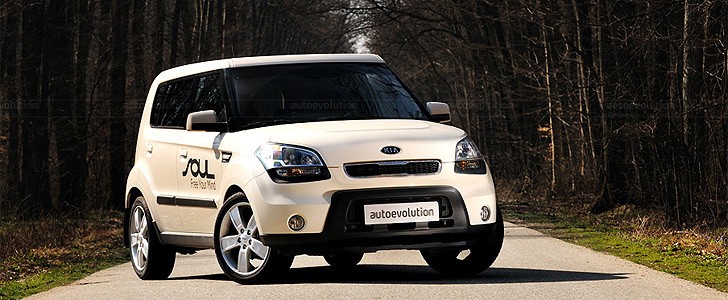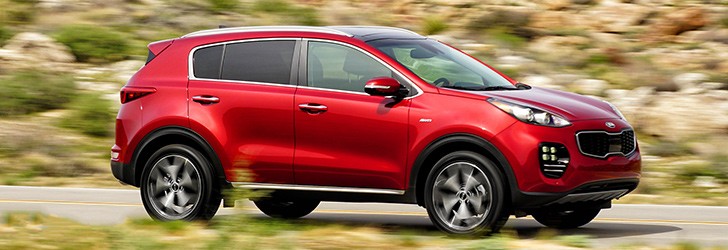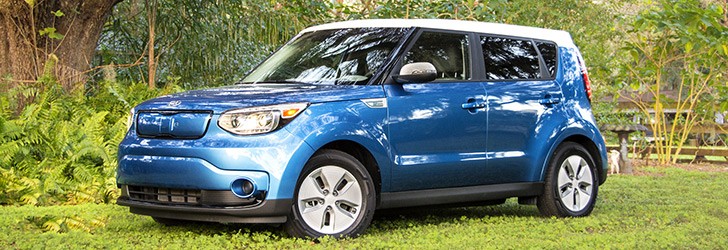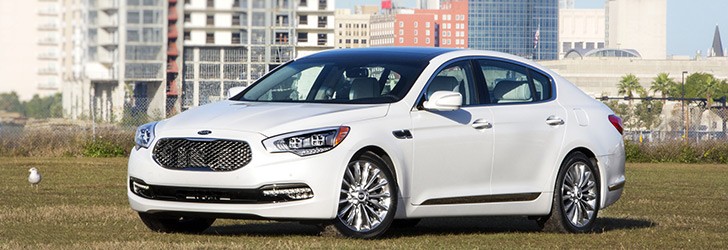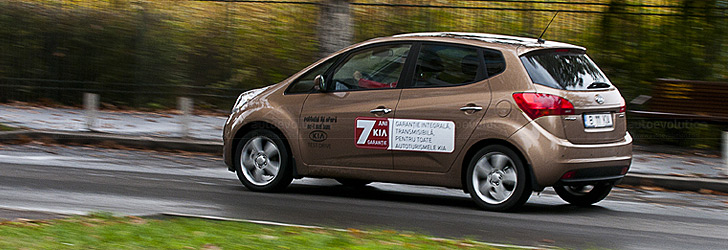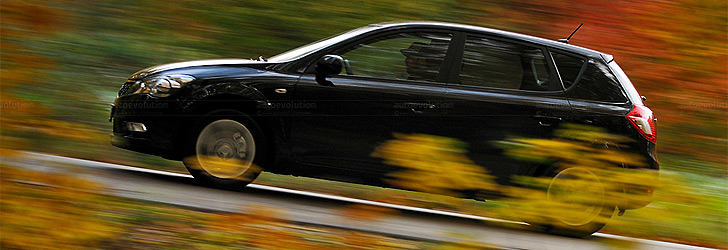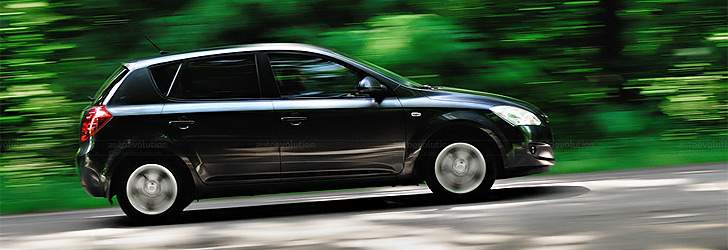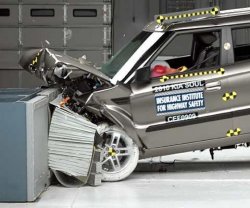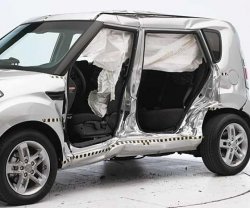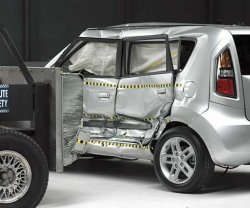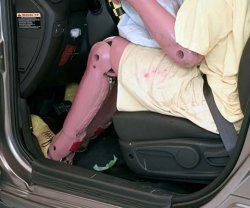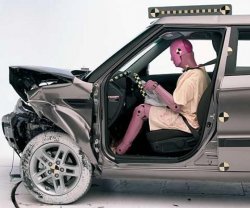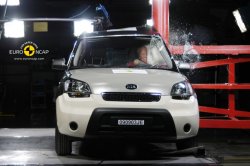KIA Soul Review
OUR TEST CAR: KIA Soul 1.6 GSL
The weird-looking Kia Soul first saw daylight in 2006 in the form of a concept model displayed at the North American International Auto Show. Instantly perceived as a Scion competitor, the so-called “urban crossover utility vehicle” (CUV) – Kia's very own words – made its debut two years later, this time in Europe at the Paris Mondial de l'Automobile.
The first sketches of the car were made in the United States but the vehicle per se was developed in Korea and Europe under the leadership of Chief Design Officer Peter Schreyer. The concept model in its turn is inspired by the Mesa prototype shown to the world at the 2005 edition of the NAIAS.
Just like Scion's models, Kia's Soul was specifically designed with the young segment of buyers in mind, offering numerous customizations options plus a wide array of features especially targeting this category of consumers. Kia said Soul buyers should fit the 18 to 35-year old range, as some of its features – the audio system and the rest of the gadgets in particular - could be less “appropriate” for an older customer.
Although it is obviously an unconventional car, Soul is actually “pointing clearly at a design-led future for the brand,” as the South Korean manufacturer said during its launch press conference back in 2008. And even if we're not sure whether the CUV will actually serve as the source of inspiration for future Kia models, the car managed to impress in most areas and surprise in terms of design and innovation.
Aimed at the American market but also sold on European soil, Soul competes with Scion xB and Nissan cube, but the former is yet to arrive on the Old Continent – there were some rumors that Toyota's executives are pondering a potential European launch for the Scion brand but such a decision is yet to be announced for the time being.
In the US however, Kia is trying to do with Soul exactly the same things Scion did with its xB: offer a youth-oriented model that could be easily customized with tons of options, no matter if we're referring to exterior or interior styling, gadgets, technical features or comfort equipment.
The European-spec on the other hand is pretty different, especially from the engine point of view, as non-US buyers could only opt for 1.6-liter gasoline or diesel variants. There are no other configurations available, as Kia chose to keep the 2.0-liter unit in the US exclusively.
We tested the 17,000+ Euros 1.6-liter gasoline version in Fever configuration (as it is called here in Europe), so keep reading to find out our impressions.
We, as European drivers who never got the chance to drive a Scion, smiled when we first saw Kia's Soul. A bulky design which Kia names “sporty” plus bold lines that manage to set the vehicle apart from the rest of the cars out there are the first things you'll notice when seeing it. Actually, it's a little hard to describe the overall shape of the car but, as compared to the xB and Nissan's cube, it looks a bit sportier, mostly thanks to the rounded (still boxy) rear side.
Funky is probably the best word to describe Soul and we strongly believe that such a car would fit great in one of the many Boxoffice-wannabe college/teenage movies out there, such as American Pie or Van Wilder. But regardless of how you describe it, ugly or beautiful, regular or unconventional, stylish or just coming from another world, Kia Soul is a serious head-turner, as it instantly catches the eyes of passing strangers. And we admit this was fun at the beginning, but the passing strangers we're talking about usually tend to stare at the driver which, in some situations, can be really embarrassing.
As we said, Soul's design is the result of a collaboration between Kia's design center in California and South Korea-based engineers and its name is actually a homophone of the region that currently hosts Kia's headquarters, Seoul, Korea.
Getting back to the exterior styling, the overall appearance denotes power and strength, but you might be surprised when getting behind the wheel of the car. The rear privacy glass, the rounded nose and the angled window design are all contributing to a somewhat sporty attitude – if we can really name it so taking into account that the car has only a few things (to say the least) in common with aerodynamics.
The rear side is dominated by the two large taillights placed on the D-pillar. The rear foglights are installed at the bottom of the rear which, in its turn, is divided into two parts, half of which holds the rear window.
It measures 4105x1785x1610 mm and has a trunk volume of 340 liters (with the rear seats in place) or 671 liters (with folded rear seats), smaller than Scion's xB (4249x1760x1643 mm) but slightly bigger than Nissan cube (3980x1695x1670 mm).
Since it's addressed to a young market, Soul's interior is specifically optimized with catchy features that capture your attention in a minute. And we must admit that, in the beginning, we were amazed and surprised too but, after a few hours spent behind the wheel, some of them became annoying or just boring.
The two-tone dashboard is surprisingly well-made and the plastics used inside provide a soft feel, rather than a cheap-like sensation. Furthermore, the round console buttons, which give you access to the audio system and air conditioning features, are surrounded by some sort of rubber that, once again, feels nice to the touch.
Overall, the interior is built around the audio system, with top Soul versions (such as ours) offering a dashboard-mounted center speaker plus two twitter speakers placed at the base of the A pillar, adjacent to the air vents. The audio system is completed by two speakers on the front doors, two on the rear doors, plus a subwoofer inside the trunk.
The center console hosts the majority of buttons, most of them allowing the driver and/or the passenger to browse among the audio system's or air conditioning system's features. There's a small LCD screen indicating the current exterior temperature, the time and the selected radio station or MP3 file.
Although we initially doubted it, Kia Soul is spacious enough to fit our 2-meter high colleague, so here at autoevolution we think this is a real major achievement, given the fact that Kobe Bryant (who is a slightly shorter than our mate) would surely struggle to get into a similarly priced car. There is enough legroom (1070 mm front and 990 mm rear) when traveling as a passenger, but getting in the driver position could be a bit problematic. Adjusting the steering wheel to the highest level does solve the space issue though.
And speaking of the driver role, the amount of light inside the car is somewhat surprising, despite the private rear glass we've mentioned before. Still, the large windshield and the high driving position provide impressive visibility, while rear view is ensured through a large auto-dimming interior mirror and two large folding exterior mirrors.
What we found pretty awkward is the central locking system that only allows the driver to block all four doors (plus the hatch) from a separate button placed near the power windows controls. Supposing that the front passenger wants to lock the rest of the doors besides the one on his right, the only viable solution is to lean towards the driver's door and press the button we were talking about. There's no corresponding control on the dashboard, so each passenger is only capable of locking the door on his side.
Unlike most cars on which the trip computer is controllable through the steering wheel-adjacent levers, Kia Soul provides access to these functions through a separate “Trip” button that actually consists of three functions: odometer, Trip A and Trip B.
Since we're dealing with a so-called “urban” vehicle, driving it in such an environment should represent the ace up its sleeve. And although we do admit that driving Kia's Soul is a lot of fun, there are some minor problems that could become extremely irritating in the end. But first things first.
Soul's dimensions are somewhat acceptable for city driving, so you should not encounter too many problems when squeezing through other cars, despite the bulky exterior appearance it boasts. Furthermore, the high ground clearance (6.5 inches/165 mm) allows the car to pass over speed bumps without the risk of hitting the ground with the front or rear bumper respectively.
Under the popular “there are no bugs, just features” IT programming principle, we discovered some – let's name them “special” - attributes of the car that managed to get on our nerves in a minute.
First of all, the suspension system. Similar in feel to the one installed on the first cee'd, the suspension configuration on Kia's Soul is far from ensuring a smooth ride. Moreover, the rear suspension is semi-rigid, instead of multi-link. The car employs MacPherson Strut on the front and CTBA (Coupled Torsion Beam Axle) on the rear and even if these two names sound pretentious, they're not able to provide the comfortable ride you'd expect from such a vehicle.
We have however enjoyed parking the car, mostly thanks to the number of parking assistance systems that turned the entire maneuver into a simple process. The parking sensors coupled with the rear-view camera connected to a small LCD display integrated into the interior camera provide a clean view when in reverse mode, regardless of the time of day/night or weather conditions. However, please note that the rear-view camera is only available as an option and is exclusively offered on the top Soul configuration.
As for fuel consumption, this is still an enigma for us because the on-board computer doesn't provide fuel consumption figures at all. However, according to our estimates, city fuel consumption should go around 11 l/100km (21.3 mpg) in extreme traffic conditions, far from Kia's official figures which point to an impressive 8.0 l/100km (29.4 mpg) rating when equipped with 18-inch wheels (also offered as an option).
The manual transmission is easy to control but we reckon that an automatic configuration would be great on such a car, especially when driven in city conditions at a rush hour.
The small luggage compartment, which measures 340 liters, should be enough for the 18- to 35-year old people Kia plans to lure into buying Soul. But carrying other things than a single barbecue, your football or basketball equipment or maybe two or three shopping bags is a serious problem and the only way to deal with it is to fold the rear seats which, to be honest, doesn't look too appropriate for a young person.
As we said, Kia Soul is a vehicle intended for city cruising and, although going on a trip with a couple of friends is a regular weekend activity, there are a few things that makes the car lose some ground versus the rest of the players in the industry.
Unfortunately for Kia, the open road chapter is the one in which the engine counts the most and, after several hours spent behind the wheel of Soul, we were more than disappointed. The 1.6-liter gasoline engine develops 124 horsepower but trust us, you won't get the chance to enjoy this amount of power. Mostly because the engine is not at all as powerful as it sounds and is difficult to achieve the official performance figures Kia mentions in the press papers.
If we are to trust these figures, the powerplant generates 124 horsepower at 6,300 rpm and 156 Nm of torque at 4,200 rpm. This helps the car sprint from 0 to 100 km/h in 11 seconds and reach a maximum speed of 177 km/h when equipped with the 18-inch wheels.
As we said, this amount of power is almost unnoticeable and the weight of 1245 kilos (2744 pounds) seems to overwhelm the engine performance. We've heard the diesel configuration is a bit more powerful, but we can't guarantee for that as official specifications are pointing to similar figures.
The trunk capacity is again a major setback and since we're talking about long trips, a scenario in which you're going on a journey with three other passengers plus their luggage is nearly impossible. The thing we missed the most was cruise control, a must-have feature that makes a vehicle “more” appropriate for long trips.
As for fuel consumption figures, we're again unsure how much fuel the car burns every kilometer due to the lack of fuel consumption ratings provided by the on-board computer. However, if we are to make an estimation, we would go for 7.8-7.9 l/100km (30.1-29.7 mpg), once again very different from the official figures of 5.7 l/100km (49.6 mpg).
The first sketches of the car were made in the United States but the vehicle per se was developed in Korea and Europe under the leadership of Chief Design Officer Peter Schreyer. The concept model in its turn is inspired by the Mesa prototype shown to the world at the 2005 edition of the NAIAS.
Just like Scion's models, Kia's Soul was specifically designed with the young segment of buyers in mind, offering numerous customizations options plus a wide array of features especially targeting this category of consumers. Kia said Soul buyers should fit the 18 to 35-year old range, as some of its features – the audio system and the rest of the gadgets in particular - could be less “appropriate” for an older customer.
Although it is obviously an unconventional car, Soul is actually “pointing clearly at a design-led future for the brand,” as the South Korean manufacturer said during its launch press conference back in 2008. And even if we're not sure whether the CUV will actually serve as the source of inspiration for future Kia models, the car managed to impress in most areas and surprise in terms of design and innovation.
Aimed at the American market but also sold on European soil, Soul competes with Scion xB and Nissan cube, but the former is yet to arrive on the Old Continent – there were some rumors that Toyota's executives are pondering a potential European launch for the Scion brand but such a decision is yet to be announced for the time being.
In the US however, Kia is trying to do with Soul exactly the same things Scion did with its xB: offer a youth-oriented model that could be easily customized with tons of options, no matter if we're referring to exterior or interior styling, gadgets, technical features or comfort equipment.
The European-spec on the other hand is pretty different, especially from the engine point of view, as non-US buyers could only opt for 1.6-liter gasoline or diesel variants. There are no other configurations available, as Kia chose to keep the 2.0-liter unit in the US exclusively.
We tested the 17,000+ Euros 1.6-liter gasoline version in Fever configuration (as it is called here in Europe), so keep reading to find out our impressions.
We, as European drivers who never got the chance to drive a Scion, smiled when we first saw Kia's Soul. A bulky design which Kia names “sporty” plus bold lines that manage to set the vehicle apart from the rest of the cars out there are the first things you'll notice when seeing it. Actually, it's a little hard to describe the overall shape of the car but, as compared to the xB and Nissan's cube, it looks a bit sportier, mostly thanks to the rounded (still boxy) rear side.
Funky is probably the best word to describe Soul and we strongly believe that such a car would fit great in one of the many Boxoffice-wannabe college/teenage movies out there, such as American Pie or Van Wilder. But regardless of how you describe it, ugly or beautiful, regular or unconventional, stylish or just coming from another world, Kia Soul is a serious head-turner, as it instantly catches the eyes of passing strangers. And we admit this was fun at the beginning, but the passing strangers we're talking about usually tend to stare at the driver which, in some situations, can be really embarrassing.
As we said, Soul's design is the result of a collaboration between Kia's design center in California and South Korea-based engineers and its name is actually a homophone of the region that currently hosts Kia's headquarters, Seoul, Korea.
Getting back to the exterior styling, the overall appearance denotes power and strength, but you might be surprised when getting behind the wheel of the car. The rear privacy glass, the rounded nose and the angled window design are all contributing to a somewhat sporty attitude – if we can really name it so taking into account that the car has only a few things (to say the least) in common with aerodynamics.
The rear side is dominated by the two large taillights placed on the D-pillar. The rear foglights are installed at the bottom of the rear which, in its turn, is divided into two parts, half of which holds the rear window.
It measures 4105x1785x1610 mm and has a trunk volume of 340 liters (with the rear seats in place) or 671 liters (with folded rear seats), smaller than Scion's xB (4249x1760x1643 mm) but slightly bigger than Nissan cube (3980x1695x1670 mm).
Since it's addressed to a young market, Soul's interior is specifically optimized with catchy features that capture your attention in a minute. And we must admit that, in the beginning, we were amazed and surprised too but, after a few hours spent behind the wheel, some of them became annoying or just boring.
The two-tone dashboard is surprisingly well-made and the plastics used inside provide a soft feel, rather than a cheap-like sensation. Furthermore, the round console buttons, which give you access to the audio system and air conditioning features, are surrounded by some sort of rubber that, once again, feels nice to the touch.
Overall, the interior is built around the audio system, with top Soul versions (such as ours) offering a dashboard-mounted center speaker plus two twitter speakers placed at the base of the A pillar, adjacent to the air vents. The audio system is completed by two speakers on the front doors, two on the rear doors, plus a subwoofer inside the trunk.
The center console hosts the majority of buttons, most of them allowing the driver and/or the passenger to browse among the audio system's or air conditioning system's features. There's a small LCD screen indicating the current exterior temperature, the time and the selected radio station or MP3 file.
Although we initially doubted it, Kia Soul is spacious enough to fit our 2-meter high colleague, so here at autoevolution we think this is a real major achievement, given the fact that Kobe Bryant (who is a slightly shorter than our mate) would surely struggle to get into a similarly priced car. There is enough legroom (1070 mm front and 990 mm rear) when traveling as a passenger, but getting in the driver position could be a bit problematic. Adjusting the steering wheel to the highest level does solve the space issue though.
And speaking of the driver role, the amount of light inside the car is somewhat surprising, despite the private rear glass we've mentioned before. Still, the large windshield and the high driving position provide impressive visibility, while rear view is ensured through a large auto-dimming interior mirror and two large folding exterior mirrors.
What we found pretty awkward is the central locking system that only allows the driver to block all four doors (plus the hatch) from a separate button placed near the power windows controls. Supposing that the front passenger wants to lock the rest of the doors besides the one on his right, the only viable solution is to lean towards the driver's door and press the button we were talking about. There's no corresponding control on the dashboard, so each passenger is only capable of locking the door on his side.
Unlike most cars on which the trip computer is controllable through the steering wheel-adjacent levers, Kia Soul provides access to these functions through a separate “Trip” button that actually consists of three functions: odometer, Trip A and Trip B.
Since we're dealing with a so-called “urban” vehicle, driving it in such an environment should represent the ace up its sleeve. And although we do admit that driving Kia's Soul is a lot of fun, there are some minor problems that could become extremely irritating in the end. But first things first.
Soul's dimensions are somewhat acceptable for city driving, so you should not encounter too many problems when squeezing through other cars, despite the bulky exterior appearance it boasts. Furthermore, the high ground clearance (6.5 inches/165 mm) allows the car to pass over speed bumps without the risk of hitting the ground with the front or rear bumper respectively.
Under the popular “there are no bugs, just features” IT programming principle, we discovered some – let's name them “special” - attributes of the car that managed to get on our nerves in a minute.
First of all, the suspension system. Similar in feel to the one installed on the first cee'd, the suspension configuration on Kia's Soul is far from ensuring a smooth ride. Moreover, the rear suspension is semi-rigid, instead of multi-link. The car employs MacPherson Strut on the front and CTBA (Coupled Torsion Beam Axle) on the rear and even if these two names sound pretentious, they're not able to provide the comfortable ride you'd expect from such a vehicle.
We have however enjoyed parking the car, mostly thanks to the number of parking assistance systems that turned the entire maneuver into a simple process. The parking sensors coupled with the rear-view camera connected to a small LCD display integrated into the interior camera provide a clean view when in reverse mode, regardless of the time of day/night or weather conditions. However, please note that the rear-view camera is only available as an option and is exclusively offered on the top Soul configuration.
As for fuel consumption, this is still an enigma for us because the on-board computer doesn't provide fuel consumption figures at all. However, according to our estimates, city fuel consumption should go around 11 l/100km (21.3 mpg) in extreme traffic conditions, far from Kia's official figures which point to an impressive 8.0 l/100km (29.4 mpg) rating when equipped with 18-inch wheels (also offered as an option).
The manual transmission is easy to control but we reckon that an automatic configuration would be great on such a car, especially when driven in city conditions at a rush hour.
The small luggage compartment, which measures 340 liters, should be enough for the 18- to 35-year old people Kia plans to lure into buying Soul. But carrying other things than a single barbecue, your football or basketball equipment or maybe two or three shopping bags is a serious problem and the only way to deal with it is to fold the rear seats which, to be honest, doesn't look too appropriate for a young person.
As we said, Kia Soul is a vehicle intended for city cruising and, although going on a trip with a couple of friends is a regular weekend activity, there are a few things that makes the car lose some ground versus the rest of the players in the industry.
Unfortunately for Kia, the open road chapter is the one in which the engine counts the most and, after several hours spent behind the wheel of Soul, we were more than disappointed. The 1.6-liter gasoline engine develops 124 horsepower but trust us, you won't get the chance to enjoy this amount of power. Mostly because the engine is not at all as powerful as it sounds and is difficult to achieve the official performance figures Kia mentions in the press papers.
If we are to trust these figures, the powerplant generates 124 horsepower at 6,300 rpm and 156 Nm of torque at 4,200 rpm. This helps the car sprint from 0 to 100 km/h in 11 seconds and reach a maximum speed of 177 km/h when equipped with the 18-inch wheels.
As we said, this amount of power is almost unnoticeable and the weight of 1245 kilos (2744 pounds) seems to overwhelm the engine performance. We've heard the diesel configuration is a bit more powerful, but we can't guarantee for that as official specifications are pointing to similar figures.
The trunk capacity is again a major setback and since we're talking about long trips, a scenario in which you're going on a journey with three other passengers plus their luggage is nearly impossible. The thing we missed the most was cruise control, a must-have feature that makes a vehicle “more” appropriate for long trips.
As for fuel consumption figures, we're again unsure how much fuel the car burns every kilometer due to the lack of fuel consumption ratings provided by the on-board computer. However, if we are to make an estimation, we would go for 7.8-7.9 l/100km (30.1-29.7 mpg), once again very different from the official figures of 5.7 l/100km (49.6 mpg).
12
Our KIA Testdrives:
Photo gallery (121)
